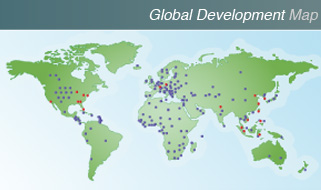-
“Primum non nocerum” (first do no harm)
Posted: October 14, 2010
Our ALS team recently presented a panel on neural cell therapy transplantation at a Stem Cell and Regenerative Medicine conference in Detroit. We are hoping to post access to the tape of the presentation in the not too distant future on our web site. I believe it offers a fascinating look into the science and practical medical issues involved in treating diseases of the brain and spinal cord with cell therapy, and when it is available I recommend that anyone with an interest view it. One of the surprises to most in the audience though, was the presentation of Dr. Jonathan Glass, our site Principle Investigator at Emory.
John heads up the ALS clinic at Emory, and sees patients (seemingly all day every day) and yet also runs a robust research lab; he is that rare combination of dedicated physician and determined researcher. Yet he lead off his part of the presentation with the above cited quote. You can imagine the tension in the room full of patients and their families and advocacy groups and companies all striving to develop novel therapies for incurable diseases.
And yet I think it is important to listen to what John said, and to understand. A physician’s primary responsibility is not to make his patient worse. It is easy for those “outside” of this relationship to take a “mental” shortcut and simply say “it’s an incurable disease, they have nothing to lose”. But as John pointed out, almost every patient can get worse, much worse, and their physician needs to be keenly protective of their quality of life, whatever it is, for however long they have it. That is why the entire disclosure process to potential trial subjects is built around educating them to the possible downside risks involved.
Yet there is certainly a “feeling” in the business and patient advocacy worlds that the medical profession, the doctors if you will, are always “slowing down” the “race” to the cure. Of course, nothing could be further from the truth. It is only through the herculean efforts of these incredibly talented and dedicated combination medical practitioners and researchers, Like Dr. Feldman, and Dr. Glass, and our Surgeon Dr. Boulis that any real progress can be made towards curing patients, regardless of the scientific promise of our cells.
This becomes particularly relevant in trying to answer questions from many of you about our Chronic Spinal Cord Injury IND. Dr. Johe disclosed at the conference that we have not yet received any comments from the FDA on this application. The proposed trial is to test our spinal cord cells (the same cells in the ALS approved trial) with injections (the same devices and injection protocol used in our ALS approve trial) into the spinal cords of chronic (here over one year but less than two years out from the injury) spinal cord injury patients.
Again, like ALS, the primary endpoints are to test the safety of the surgery and the cells; and again, as in the ALS study we will also be looking at secondary endpoints measuring possible functional recovery. We have stated publicly that we hope to have this approved by the end of this year, and still feel that way. Many of you have asked me why, with the demonstrated safety of the cells and the surgery in (arguably) more fragile late stage ALS patients, the FDA would have any questions about the safety in chronic (but stable) spinal cord injury patients? “First do no harm”. This lies at the heart of the medical profession’s relationship to patients, and at the heart of all responsible biomedical research.
The FDA will certainly look at the existing ALS patient data, but SCI patients are different, and their disease is not fatal. As Dr. Glass would point out, they all have some quality of life, often a very long life, and they do have “something” to lose. And so we expect the FDA to approach our application with the same degree of caution and questions as they do every application. The process of getting a completely novel therapeutic approach approved for human trial is an iterative process. As I have said before to many of you, it is a conversation between the FDA and us. A conversation where they ask the questions they need to ask to become comfortable with the risks inherent in the process, the risks we are asking the patients to take. It is both appropriate and useful that they take this approach, though we are all chomping at the bit to start, patients and doctors alike.
“Primum non nocerum”. Yes, it is code for “slow down” in the world of biomedicine, but as I think all who heard Dr. Glass speak now understand, it plays an essential role in making sure that real progress takes place.






